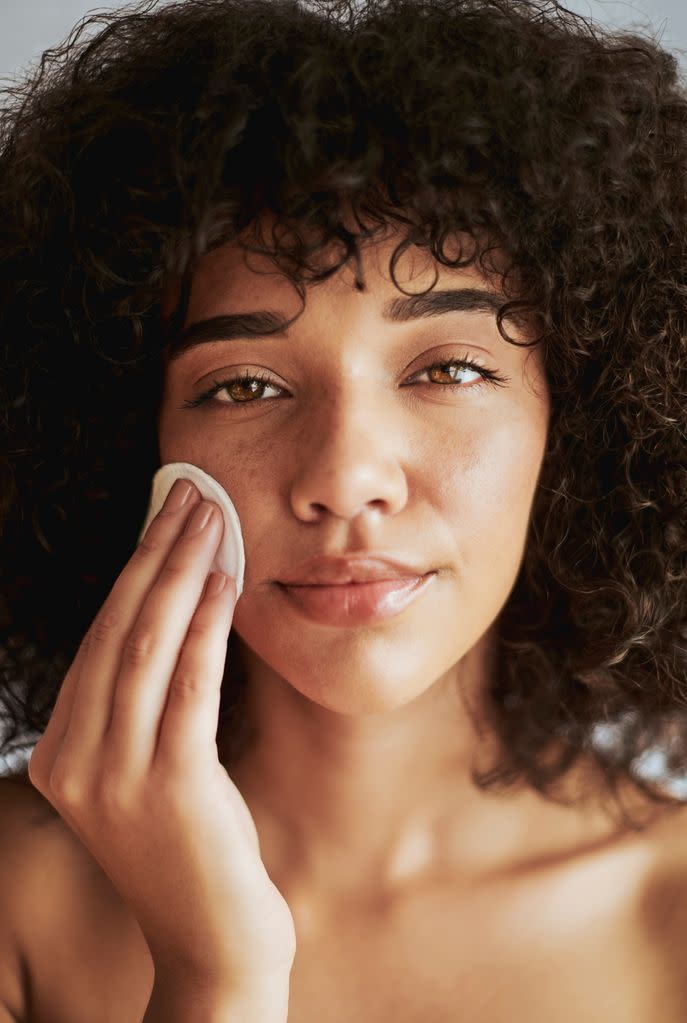Summer is the season when protecting our skin from the sun becomes a top priority. However, an equally important—and often significantly underestimated—task is properly removing sunscreen from the skin. Completely eliminating sunscreen can be a challenge, especially if you’re diligent about reapplying throughout the day, as this can lead to a buildup of residue on your skin. Effective protection isn’t just about how much SPF you use in the sun; it also involves how you care for your skin beneath the surface. This means maintaining healthy skin through proper cleansing, especially during this season. Here’s how to do it according to experts.
Sunscreen is one of the most complex formulations in cosmetics. It is designed to cling tightly to the skin, forming an effective barrier against harmful UV rays. This attachment is precisely what makes its removal difficult. Lorena Escrivá, the technical director of Mabo-Farma, the laboratory behind SkinRoutine by Paloma Sancho, explains that "it’s as if the sunscreen sticks directly to your face for protection, and if it’s not removed properly, it can lead to impurities."
The challenge lies in the chemical composition of sunscreens. Most contain lipophilic ingredients (fat-loving) that are resistant to water. "Water and oil don’t mix due to their chemical differences, making it harder to remove sunscreens with a water-based cleanser," Escrivá elaborates. This indicates that an oil-based gel cleanser alone may not suffice to fully remove these products.
To effectively eliminate sunscreen, experts recommend using a cleansing oil. Mau Castillo from Farmacia Castillo for SkinRoutine by Paloma Sancho asserts, "a cream with sunscreen cannot be removed from the skin using a water-based product, like a gel. We need a thicker formula to effectively lift it and ensure our face is clean and free."
The chemical principle behind this advice is straightforward: "like dissolves like." This means that fat can be removed with fat. A cleansing oil can break down the lipophilic barrier of sunscreen, allowing for more effective removal. This type of cleanser is suitable for all skin types, including oily and acne-prone skin, as long as you select an appropriate formulation.
For complete facial cleansing after a day at the beach or pool, a double cleansing routine is recommended. This involves two steps:
-
Oil-based cleanser: Apply the cleansing oil to dry skin, gently massaging to dissolve the sunscreen and other impurities. Rinse with warm water. This initial step helps dismantle the sunscreen layer.
- Water-based cleanser: After using the cleansing oil, a water-based cleanser can be used to eliminate any remaining residues. This step ensures that the skin is entirely clean and free of impurities.
Escrivá emphasizes that "oil can be used by all skin types, even oily ones. Remember: oil removes oil." However, for acne-prone skin, it’s essential to consider specific oils that won’t clog pores and select formulations suited to these conditions.
During summer, your skin may accumulate more impurities and dead cells due to sweat and the constant use of sunscreen. Incorporating gentle exfoliation into your weekly routine can help maintain clear pores.
After cleansing, hydrating the skin is crucial. Opt for lightweight, non-comedogenic products to keep your skin hydrated without clogging pores.
In the summer, your skin may become more sensitive due to external factors like heat, salt, chlorine, and sun exposure. Using gentle products with natural ingredients can help prevent irritation.
It’s especially advisable to minimize heavy makeup usage on hot days. Reducing the use of thick makeup can allow your skin to breathe better and decrease the buildup of products atop your sunscreen.
The debate over double cleansing has always been a hot topic, but one thing is clear: summer is the perfect time to embrace this essential practice.
Learn more about the best sunscreens recommended by dermatologists.
Image and News Source: https://es-us.vida-estilo.yahoo.com/limpieza-facial-verano-eliminar-restos-223500620.html




